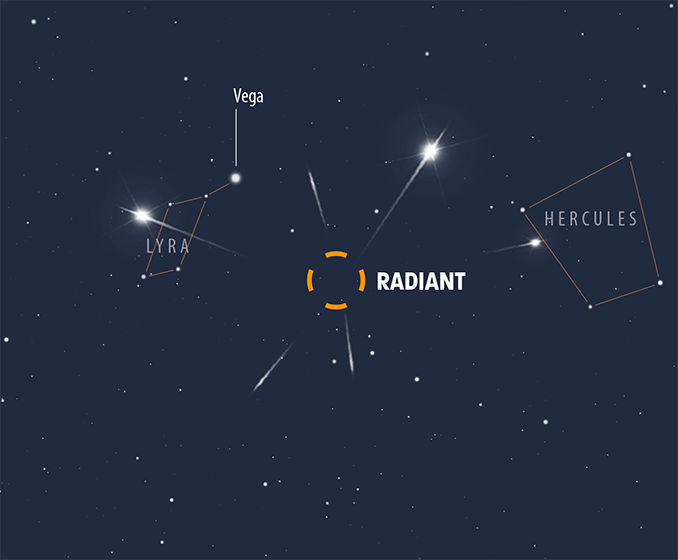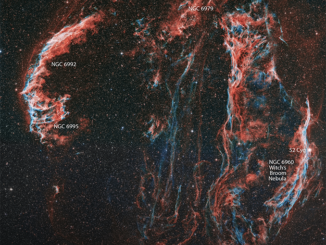
The return of the yearly April Lyrids meteor shower is very welcome for meteor observers, breaking the roughly 15-week hiatus since the maximum of the Quadrantids meteor shower on 3 January. The Lyrids are active between 14 to 30 April, with this year’s peak expected to occur on the evening of 22/23 April at 19h UT (8pm BST). Observed rates of Lyrids remain respectable for three days centred around their predicted peak, so this allows for an additional meteor watch, more advantageously on the night of 21/22 April.
Although evaluated just a medium-strength shower, with rates of observed meteor lagging some way behind the major showers of the year such as August’s Perseids and December’s Geminids, given a clear and transparent night shooting-star enthusiasts can expect to catch its ‘normal’ quota of around 10 meteors an hour.
Lyrid shooting stars are produced from the debris stream of the long-period comet 1861 G1 (Thatcher), which last appeared in the inner Solar System at the time of its discovery (it’s not expected to return again until 2283). Minute debris shed by the comet has spread out along its orbit around the Sun. When Earth encounter this stream at around the time Lyrids maximum tiny particles enter the atmosphere and are vaporised, producing streaks of light called meteors. Lyrids are medium-speedmeteors (~48 kilometres per second).
Lyrid meteors appear to emanate from the direction of Lyra’s brilliant star Vega, hence the shower’s name. However, the shower’s radiant, (thepoint in the skyto which the meteors’ paths can be traced back), lies just inside neighbouring Hercules’ territory (RA 18h 07m, Dec +33.1°).
The timing of the Lyrids 2022 peak is not particularly favourable for UK observers, as the radiant has just risen in the north-east at 8pm BST. By 11pm BST, the radiant has climbed to an elevation of 25 degrees,a still far-from-ideal altitude as some Lyrids will probably not clear the horizon. To give yourself the best opportunity to see some meteors your best bet is to wait until after 1am to give the radiant more time to climb in the eastern sky. Before this time, some potential Lyrid activity will occur below the horizon, and by waiting until the radiant is higher in the sky you’ll see more shooting stars and it will be easier to track their paths across the sky to confirm whether it was a Lyrid or merely a sporadic.
However, there’s good news on the Moon front; a last-quarter Moon in Sagittarius doesn’t rise until about 2.40am BST from London and won’t be a serious hindrance to meteor watches conducted in the run-up to dawn.
Although we’re hopefully passed the sub-zero, bone-chilling nights of deep winter, however long you intend to look for meteors you should dress appropriately for cool weather by wearing plenty of layers of warm clothing, including perhaps a wooly hat and a pair of gloves. Also have a hot drink and a couple of snacks to hand to keep you going. Get comfortably sitting in a reclining chair and if you can keep any local sources of bright lighting out of your direct vision. Try become fully dark adapted (for at least 15–20 minutes) before starting a watch and use only a red torch for illumination.
Observing from the small hours and up to the run-up to dawn is not for the faint-hearted, but the Lyrids are worth making a special effort to observe. This years predicted peak occurs on a more socially-favourable Friday night into Saturday morning too. The shower is known to offer up the occasional spectacular fireball (a very bright meteor) and if you witness one it’ll live a long time in the memory. Furthermore, every now and then the Lyrids spring a surprise and rates well in excess of predictions are experienced, notably in 1982. So find a decent observing site away from excessive town and city lighting, wrap up warm and enjoy the show!




